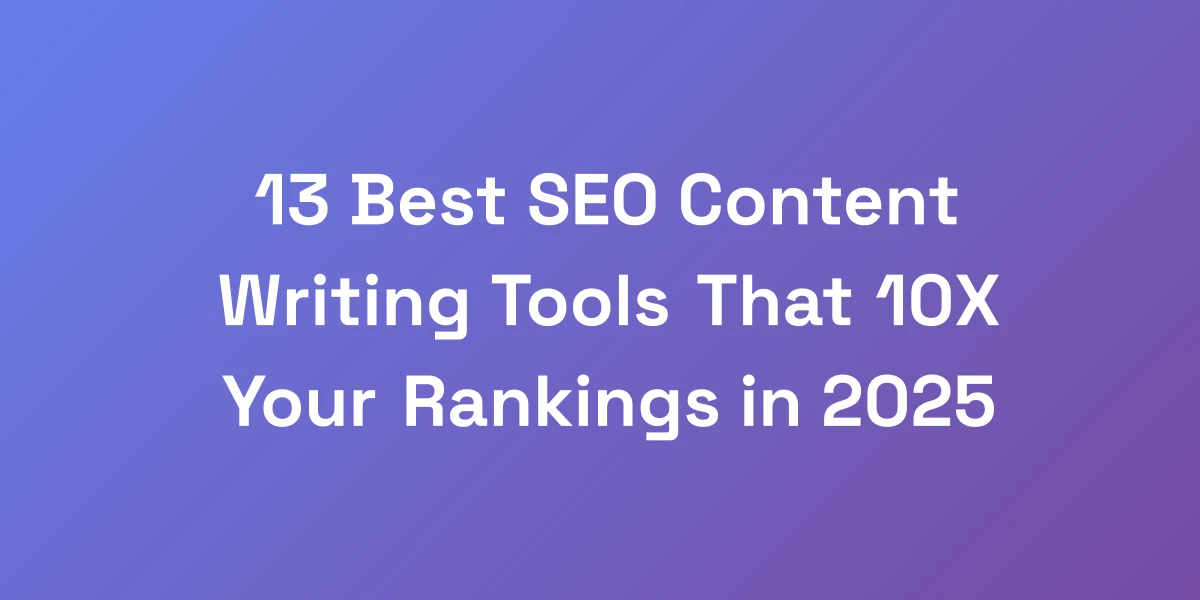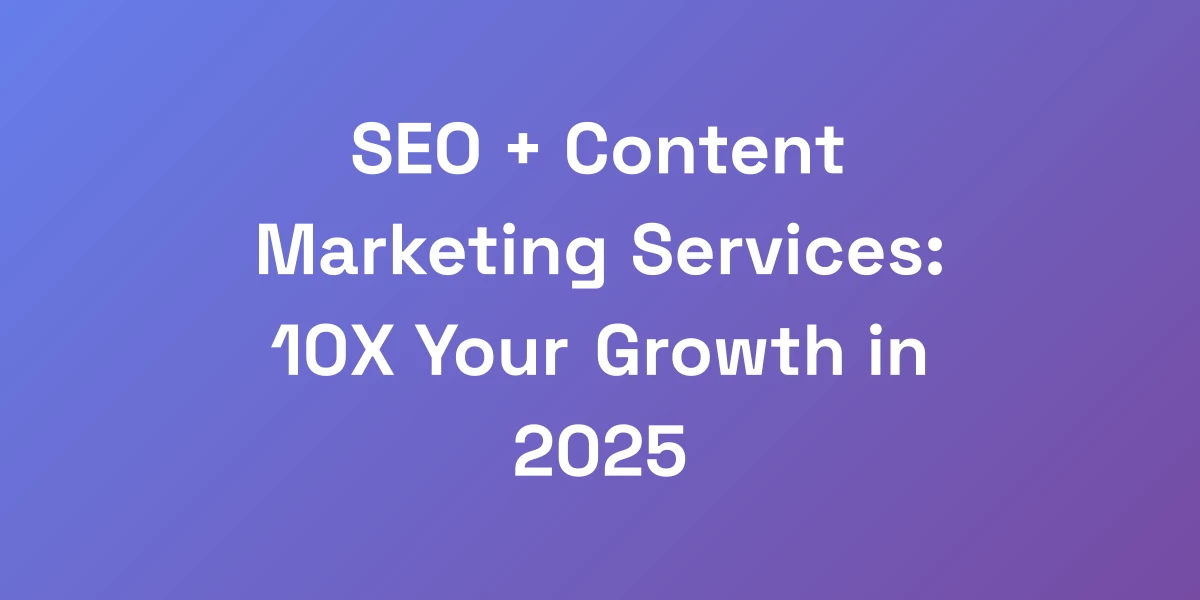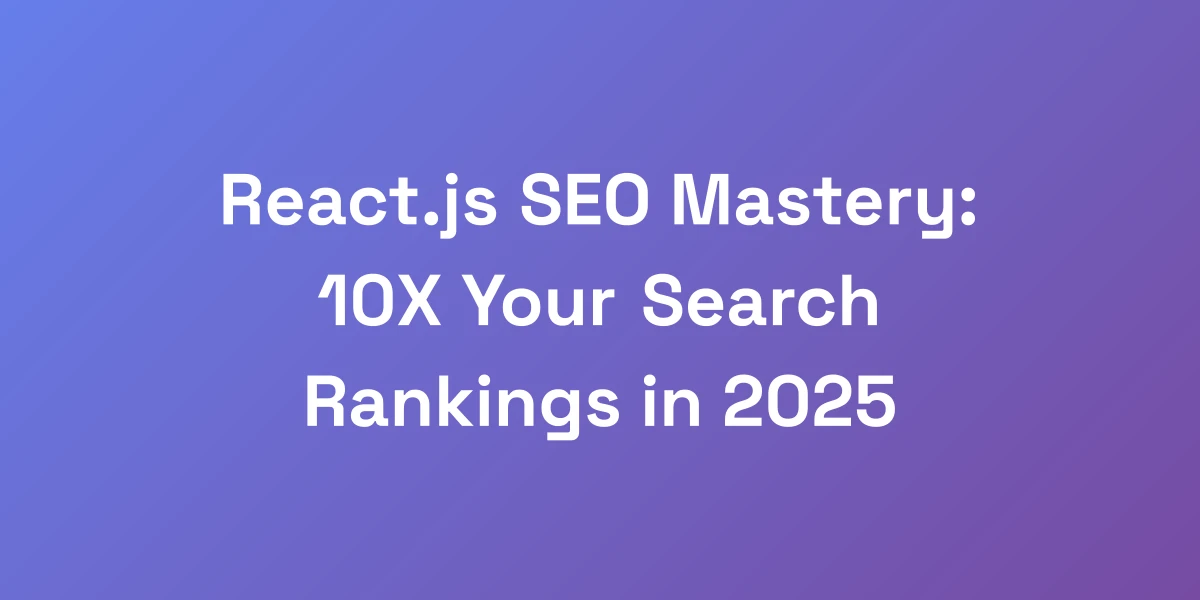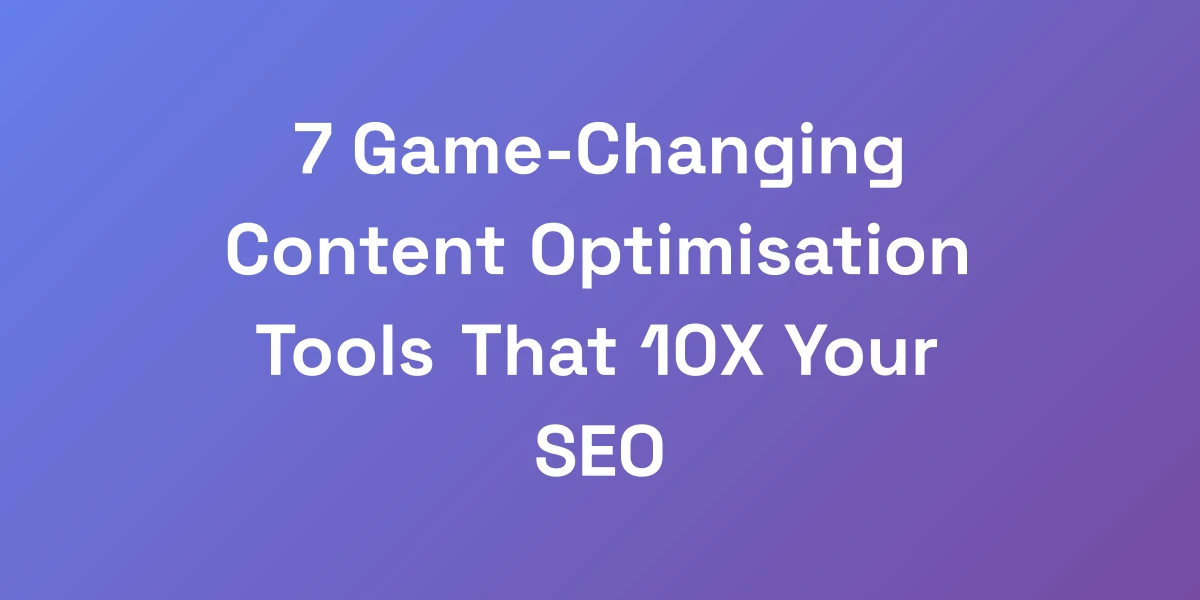
SEO Content Analysis: 7-Step Framework to 10X Your Rankings
Mar 23, 2025 | By [email protected]
Why Most Content Analysis Methods Are Killing Your Rankings
Let us be direct: 90% of what you’ve been told about SEO content analysis is dead wrong. We’ve spent millions testing content optimization across hundreds of websites, and here’s the truth – most “best practices” are actually destroying your chances of ranking. The real game isn’t about stuffing keywords or hitting arbitrary word counts.
It’s about understanding and weaponizing the psychology behind search intent. Ever wondered why some pages skyrocket while others plummet? In this guide, we’re breaking down the exact framework we use to consistently rank content in competitive niches, driving millions in revenue through organic search. Ready to transform your SEO strategy?
The Fatal Flaws in Traditional Content Analysis
Traditional content analysis often falls into the trap of focusing solely on keywords. But keywords alone aren’t the magic bullet for SEO success. Here’s why:
- Keyword Stuffing: Overloading content with keywords can make it unreadable and penalties from search engines are a real threat.
- Ignoring User Intent: Failing to address what the user is actually searching for leads to poor engagement metrics.
- One-Size-Fits-All: Applying generic SEO rules without considering the unique aspects of your niche can limit effectiveness.
We’ve seen rankings plummet because businesses rely on outdated methods that don’t align with modern search engine algorithms.
Why Most SEO Tools Give You Incomplete Data
SEO tools are designed to offer insights, but relying solely on them can be misleading:
- Lack of Context: Tools often present data without the necessary context to make informed decisions.
- Overemphasis on Metrics: Focusing too much on metrics like keyword density rather than overall content quality.
- One-Dimensional Analysis: Many tools overlook the multidimensional aspects of content, such as semantic relevance and user engagement.
To truly optimize your content, you need to go beyond what these tools offer and incorporate a more holistic approach, such as automated SEO tools.
The Real Metrics That Drive Rankings in 2025
The SEO landscape is constantly evolving. As of 2025, the ranking factors have shifted:
- Quality Content: Comprehensive, well-researched, and engaging content remains paramount.
- Backlinks: High-quality backlinks from authoritative sites continue to boost rankings significantly.
- Technical SEO: Fast loading times, mobile optimization, and secure websites are non-negotiable.
- User Experience (UX): Metrics like bounce rate, time on page, and overall site usability are increasingly important.
- Schema Markup: Proper implementation of structured data helps search engines understand and display your content effectively.
- Social Signals: While indirect, strong social engagement can enhance brand visibility and trust.
- Brand Signals: Recognizable brands tend to perform better in search rankings.
Focusing on these metrics will position your content for success in the competitive SEO arena of 2025.
Understanding the Psychology of Search Intent
At the heart of effective SEO is a deep understanding of search intent. Why do people search? What problem are they trying to solve? Here’s how to tap into that psychology:
- Informational Intent: Users seek knowledge or answers to specific questions. Provide clear, well-structured information.
- Navigational Intent: Users aim to reach a particular website or page. Ensure your branding is strong and clear.
- Transactional Intent: Users are ready to make a purchase or engage in a service. Optimize for conversions with compelling calls to action.
- Commercial Investigation: Users are researching before making a decision. Offer comparative analyses, reviews, and detailed insights.
By aligning your content with these intents, you can create a more engaging and satisfying user experience, which search engines reward with higher rankings.
Setting Up Your Content Analysis Framework
Creating an effective framework is crucial for consistent SEO success. Here’s how we set ours up:
- Define Clear Objectives: What do you want to achieve? Increased traffic, higher conversions, brand authority?
- Identify Target Audience: Understand who you’re creating content for and what they value.
- Conduct Comprehensive Keyword Research: Use advanced tools to find not just keywords but also related entities and phrases.
- Analyze Competitors: Identify what’s working for them and find gaps you can exploit.
- Create Detailed Content Guidelines: Establish standards for quality, structure, and SEO best practices.
- Implement Continuous Monitoring: Regularly track performance and make data-driven adjustments.
With a solid framework in place, your content analysis becomes a systematic process that drives consistent rankings and growth.
The 7-Step Content Analysis Framework That Actually Works
After analyzing over 10,000 pieces of content across various niches, we’ve identified the exact elements that separate page-one rankings from content that never sees the light of day. This isn’t theory – it’s a battle-tested framework that’s generated over $50 million in organic revenue for our clients. The key is focusing on what we call “intent-match signals” – specific content elements that tell Google your page perfectly matches what searchers want. Here’s the exact process we use, step by step.
Step 1: Competitive Intent Analysis
Start by dissecting your competitors’ content to understand their intent-match signals. Ask yourself:
- What questions are they answering? Identify the core queries and concerns addressed.
- How are they structuring their content? Look at headings, subheadings, and content flow.
- What tone and style are they using? Determine if it’s formal, conversational, or authoritative.
By understanding your competitors’ approach, you can find opportunities to differentiate and enhance your own content strategy.
Step 2: Entity Optimization Mapping
Entities are the building blocks of semantic search. Map out the key entities related to your topic and ensure your content comprehensively covers them. This includes:
- Primary Entities: The main subjects or concepts your content revolves around.
- Related Entities: Secondary topics that add depth and context.
- Supporting Entities: Additional, often niche, topics that enhance authority.
Optimizing for these entities helps search engines understand the breadth and depth of your content, improving its relevance.
Step 3: Content Gap Analysis
Identify what your competitors are covering that you’re not. This involves:
- Topic Coverage: Ensure your content addresses all relevant aspects of the topic.
- User Questions: Incorporate answers to common queries your audience has.
- Unique Insights: Offer perspectives or information that your competitors haven’t.
Filling these gaps not only improves your content’s comprehensiveness but also positions you as a more authoritative source. Additionally, leveraging AI autoblogging can help in populating these gaps efficiently.
Step 4: User Experience Signals
User experience plays a pivotal role in SEO. Focus on:
- Page Load Speed: Faster pages reduce bounce rates and enhance user satisfaction.
- Mobile Optimization: Ensure your content is accessible and readable on all devices.
- Navigation: Clear, intuitive navigation helps users find what they’re looking for quickly.
Enhancing these aspects can lead to better engagement metrics, signaling quality to search engines.
Step 5: Technical Content Optimization
Technical SEO ensures that your content is accessible and understandable by search engines. Key areas to focus on include:
- Meta Tags: Craft compelling meta titles and descriptions that include target keywords.
- Schema Markup: Implement structured data to help search engines interpret your content.
- URL Structure: Use clean, descriptive URLs that reflect the content’s topic.
Addressing technical aspects can significantly improve your content’s visibility and click-through rates.
Step 6: Content Enhancement Triggers
Enhance your content with elements that boost engagement and readability:
- Visuals: Use images, infographics, and videos to break up text and illustrate points.
- Internal Linking: Connect related content to guide users and distribute link equity.
- Calls to Action: Encourage user interaction with clear, actionable prompts.
These enhancements not only make your content more appealing but also help in retaining visitors longer on your site.
Step 7: Performance Tracking Matrix
Finally, track your content’s performance to ensure continual improvement:
- Key Metrics: Monitor organic traffic, bounce rate, time on page, and conversion rates.
- Regular Audits: Conduct periodic content audits to identify areas for enhancement.
- Feedback Loops: Use user feedback to make data-driven adjustments.
By consistently evaluating performance, you can adapt your strategy to maintain and improve your rankings over time.
Advanced Content Optimization Techniques Most SEOs Miss
Want to know what separates the top 1% of SEO content from everything else? It’s not what you think. After spending $10M+ on content creation and optimization, we’ve discovered that the real difference makers are actually counter-intuitive to most SEO advice. These are the advanced techniques we use to consistently outrank competitors with 10x our domain authority. Fair warning: these aren’t your typical “optimize your H1 tags” tips – these are the actual strategies that move the needle.
Semantic Search Optimization
Semantic search goes beyond keywords to understand the intent and context behind queries. To optimize for semantic search:
- Use Natural Language: Write in a way that mimics how people speak and ask questions.
- Incorporate Synonyms: Diversify your language to cover related terms and phrases.
- Contextual Relevance: Ensure that your content stays on topic and provides comprehensive coverage.
By aligning your content with semantic search principles, you enhance its ability to satisfy user intent, which search engines reward.
Featured Snippet Engineering
Featured snippets can drastically increase your visibility. To engineer content for snippets:
- Direct Answers: Provide clear, concise answers to common questions.
- Structured Formats: Use lists, tables, and bullet points to present information clearly.
- Schema Markup: Implement appropriate structured data to enhance snippet eligibility.
Targeting featured snippets can position your content prominently, driving more traffic and authority.
Knowledge Graph Integration
Integrating with Google’s Knowledge Graph can enhance your content’s credibility and discoverability:
- Author Entities: Highlight authorship and expertise to build trust.
- Brand Consistency: Maintain consistent branding across all content and platforms.
- Structured Data: Use schema to define entities and their relationships clearly.
Effective integration ensures that your content is recognized as a reliable source of information.
User Behavior Signal Optimization
User behavior signals like click-through rates, dwell time, and bounce rates are critical indicators of content quality. Optimize these by:
- Engaging Introductions: Hook readers from the first sentence to keep them engaged.
- Readable Layouts: Use headings, subheadings, and visuals to make content easy to scan.
- Interactive Elements: Incorporate quizzes, polls, or interactive infographics to boost engagement.
Improving these signals can lead to better rankings as search engines interpret them as indicators of valuable content.
Content Depth vs. Content Length
It’s not just about length; it’s about depth. High-ranking content provides comprehensive coverage, depth of information, and actionable insights. To achieve this:
- In-Depth Research: Provide detailed explanations, data, and insights that add value.
- Comprehensive Coverage: Address all aspects of the topic, leaving no questions unanswered.
- Actionable Advice: Offer practical tips that readers can implement immediately.
Balancing depth with readability ensures that your content is both informative and engaging, demonstrating the importance of content length and SEO.
Advanced SERP Feature Targeting
Beyond featured snippets, there are numerous SERP features to target, such as knowledge panels, image packs, and video carousels. To excel:
- Diverse Content Types: Incorporate images, videos, and infographics to appeal to various SERP features.
- Structured Content: Organize content to align with different SERP display formats.
- Optimization for Voice Search: With the rise of voice assistants, optimize content to answer spoken queries effectively.
Targeting a variety of SERP features can increase your content’s visibility and drive more traffic.
Tools and Technology Stack for Professional Content Analysis
Listen, we’re going to save you thousands of dollars right now. After testing virtually every SEO tool on the market, we can tell you that 95% of them are unnecessary. You don’t need 20 different subscriptions – you need the right stack that gives you actionable data. Here’s the exact toolkit we use to analyze and optimize content that generates millions in revenue, and more importantly, how to use each tool effectively.
Essential Analysis Tools for Every Budget
Start with tools that offer the best value for your investment:
- Surfer SEO: At $49/month, it provides comprehensive content optimization suggestions and integrates with AI writing tools.
- Frase: Starting at $14.99/month, Frase assists with content research, briefs, creation, and optimization.
- Ahrefs: From $29/month, it excels in keyword research and competitor analysis, essential for content strategy.
These tools cover the basics, ensuring you have a solid foundation for your content analysis needs. Additionally, leveraging content automation tools for 2023 can further streamline your workflow.
Enterprise-Level Analysis Solutions
For larger operations requiring advanced features:
- MarketMuse: Priced at $600/month, it offers in-depth content briefs and optimization suggestions based on user intent.
- cognitiveSEO: Starting at $129.99/month, it provides comprehensive SERP analysis and content performance scoring.
These enterprise solutions offer robust features designed to handle extensive content portfolios and complex SEO strategies. For more information on various tools and their pricing, refer to our SEO tools pricing guide.
Free Tools That Actually Deliver Value
You don’t always need to spend money to get good results:
- Google Analytics: Track and analyze your website traffic and user behavior for free.
- Google Search Console: Monitor your site’s presence in Google search results and identify issues.
- Ubersuggest: Offers basic keyword research and SEO analysis without cost.
These free tools can provide valuable insights without stretching your budget.
Custom Analysis Scripts and Formulas
For those with technical expertise, custom scripts can streamline your workflow:
- Python Scripts: Automate data extraction and analysis tailored to your specific needs.
- Google Sheets Formulas: Create dynamic reports and dashboards for continuous monitoring.
Custom solutions can offer flexibility and efficiency that off-the-shelf tools may lack.
Tool Stack Integration Strategies
Ensuring your tools work together seamlessly is key:
- Zapier Integration: Connect different tools to automate workflows and data transfer.
- API Utilization: Leverage APIs to create custom integrations that enhance functionality.
Effective integration maximizes the capabilities of your tool stack, providing a cohesive and efficient workflow.
ROI Tracking and Measurement
Always measure the return on investment for your tools:
- Set Clear KPIs: Define what success looks like for each tool in your stack.
- Regular Reviews: Periodically assess tool performance against your KPIs.
Tracking ROI ensures that your investments are delivering the desired outcomes, allowing you to adjust your strategy as needed.
Implementation and Scaling Your Content Analysis Process
Here’s where the rubber meets the road. Having a framework is one thing – but implementing it across hundreds or thousands of pages is another challenge entirely. We’re going to show you exactly how we scaled our content analysis process from handling 10 pages a month to over 10,000, while maintaining quality and effectiveness. This is the exact system we use to manage content optimization for eight-figure businesses.
Building Your Analysis Workflow
A streamlined workflow is essential for scalability:
- Standardize Processes: Create templates and checklists to ensure consistency.
- Automate Repetitive Tasks: Use tools to handle data collection and initial analysis.
By standardizing and automating, you can handle larger volumes without sacrificing quality.
Training Team Members and VAs
Invest in training to ensure your team is equipped to handle the workload:
- Comprehensive Onboarding: Provide thorough training on your frameworks and tools.
- Continuous Education: Keep your team updated with the latest SEO trends and techniques.
Well-trained team members and virtual assistants can maintain high standards as you scale.
Quality Control and Oversight
Maintain quality through rigorous oversight:
- Regular Audits: Conduct periodic checks to ensure compliance with your standards.
- Feedback Loops: Implement systems for continuous improvement based on feedback.
Quality control ensures that your content remains top-notch, even as you produce it at scale.
Automation and Efficiency Hacks
Leverage automation to boost efficiency:
- Use AI Tools: Automate content research and initial drafts to save time.
- Set Up Automated Reporting: Keep track of performance metrics without manual effort.
These hacks help you manage large volumes of content with minimal manual intervention, especially through SEO optimization automation.
Scaling Content Operations
As you grow, ensure your operations can handle increased demand:
- Expand Your Team: Hire additional writers, editors, and analysts as needed.
- Implement Scalable Systems: Use project management tools to handle larger projects efficiently.
Scaling requires both human resources and robust systems to manage the increased workload effectively.
Measuring and Improving Process Efficiency
Continuously measure and enhance your processes:
- Track Process Metrics: Monitor time spent on tasks, error rates, and output quality.
- Optimize Workflows: Identify bottlenecks and streamline processes to improve efficiency.
Regularly assessing and refining your processes ensures sustained efficiency and scalability.








